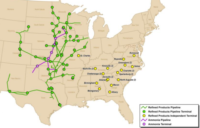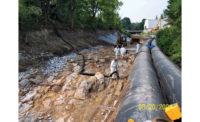New York state intends to sue the U.S. Environmental Protection Agency for issuing a certificate to General Electric Co. affirming the company completed its $1.7-billion cleanup of about 40 miles of the upper Hudson River, contaminated with PCBs from two former factories. State Attorney General Letitia James said April 11 that a December state study showed elevated PCB levels in river sediment and concentrations in fish, which were not recovering at the rate EPA anticipated.
EPA Regional Administrator Pete Lopez says the issue “boils down to a disconnect over interpretation” of the 2006 federal cleanup consent decree with GE. The EPA certificate confirms dredging and other work were properly performed in removing 2.4 million cu yd of contaminated sediment from 2011 to 2015.
The decree required GE to dredge about two-thirds of the contaminated sediment, with the remainder expected to recover through natural attenuation over 50 years, Walter Mugdan, EPA deputy regional administrator and former Superfund director, told ENR. EPA deferred determining the remedy’s success until more fish data is gathered. GE must monitor sediment and fish, with EPA not set to issue a final “certification of completion of work” for more than five decades, Lopez says.
EPA expects it will take about eight years of post-dredge sampling to set a trend of decreased PCB levels in fish. Sampling has occurred for just two years. The state study had similar results to EPA’s data, says John Price, regional Superfund director. “We need to wait to see a trend,” he says. The decree has a “reopen provision” to require more work if needed, Lopez says. “The state feels we missed our ability to compel GE to do more work. We don’t believe that’s the case.”





Post a comment to this article
Report Abusive Comment